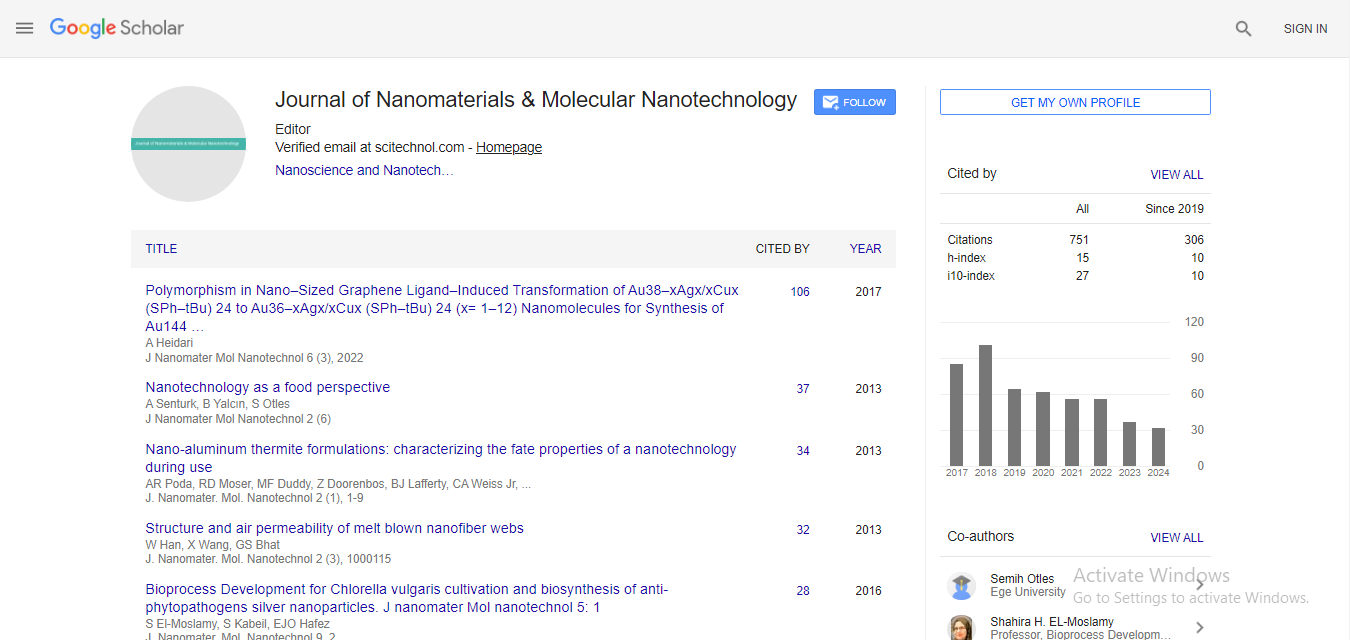Empirical modeling of cutting speed during WEDM of MONEL K 500
Bhupinder Singh and J P Misra
National Institute of Technology Kurukshetra, India
: J Nanomater Mol Nanotechnol
Abstract
Machining of nickel-based superalloys is one of the challenging tasks in recent years. On the other hand, since last decade wire electric discharge machining (WEDM) process is one of the most emerging as an advance machining process, extensively used to machine difficult-to-machine materials like nickel, titanium and other super alloys with intricate shapes and complex profiles. In WEDM, cutting speed (CS) is a key performance measure to achieve optimal utilization of process. However, input process parameters of WEDM and combination of wire and workpiece material greatly hamper CS and hence productivity and machining efficiency. Therefore, it is essential to pick the right combination of parameters and wire and workpiece material to obtain better CS. In this paper, four process parameters: Ton, Toff, Sv, and Ip were chosen to develop an empirical model for CS during WEDM of Monel K 500 to provide a guideline to the potential users of the technique. This paper describes the response surface methodology (RSM) based mathematical modeling for average cutting speed. Furthermore, analysis of variance (ANOVA) was applied to find out significant process parameters and it was depicted that pulse on time and peak current were the major parameters affecting CS. In addition, microhardness, recast layer thickness and WEDMed surfaces are analyzed at various discharge energy levels. The WEDMed surfaces appeared in the form of micro-cracks, craters, spherical droplets and the lump of debris. Maximum recast layer and microhardness are obtained at higher discharge energy level. This happened due to re-solidification of work material surface. It is obvious from the current investigation that input parameters have the significant influence on cutting speed. The key features of experimental procedure are also highlighted in this paper.
Biography
Bhupinder Singh is a full time Research Scholar in the Department of Mechanical Engineering, National Institute of Technology, Kurukshetra, India. His areas of interest are advancing machining processes, Fabrication of composite and advanced material. Before pursuing PhD, he has four years of working experience. He has worked as a Production Engineer in AGH industries Baddi, Himachal Pradesh and as an Assistant Professor in Swami Devi Dyal Institute of Engineering, Panchkula, Haryana.
E-mail: er.bsch@gmail.com
 Spanish
Spanish  Chinese
Chinese  Russian
Russian  German
German  French
French  Japanese
Japanese  Portuguese
Portuguese  Hindi
Hindi 



